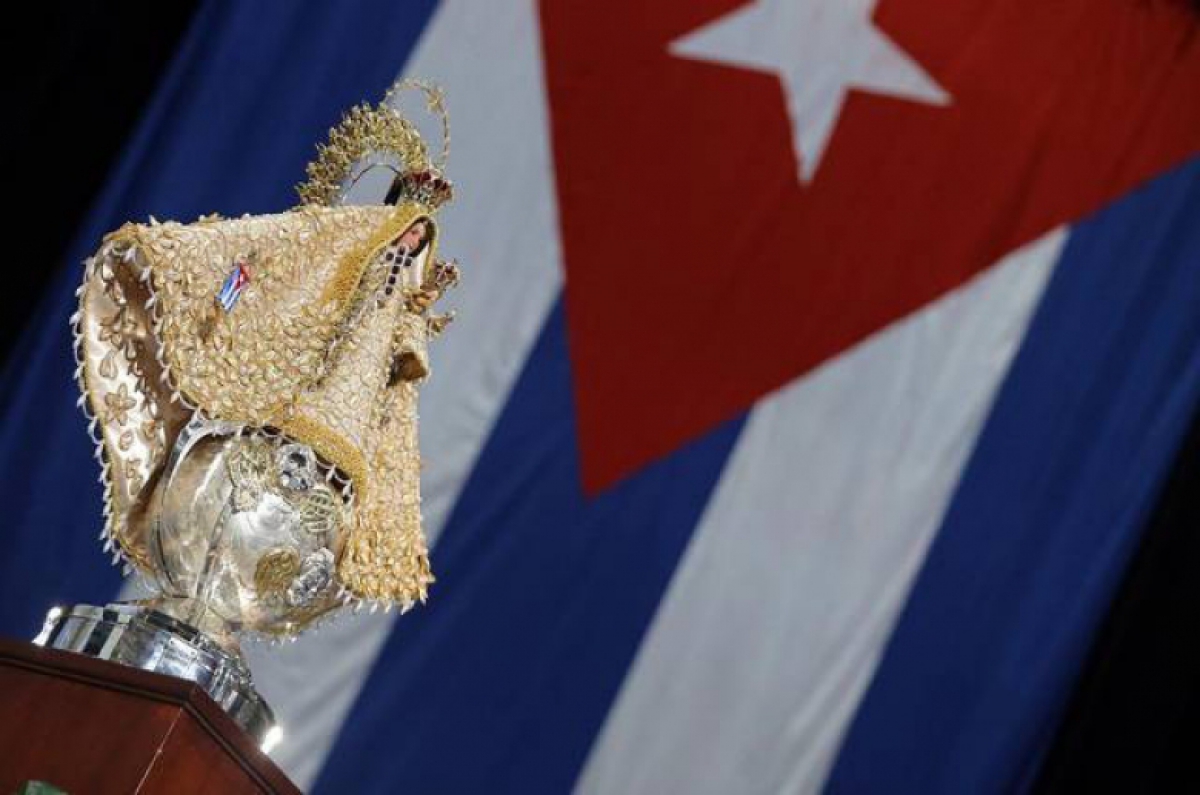It is very likely that most young Cubans on the island do not know who the Virgen de la Caridad del Cobre (Our Lady of Charity, or Our Lady of Cobre) is. And the few who do know about her do not know the whole story, or they know things second-hand, or have been misinformed. This is the legacy of more than half a century of persistently distorted values, negated personalities, and a concealed past. In this very newspaper we owe a debt to Dimas Castellanos, Pedro Campos, Roberto Álvarez Quiñones and others for their "seditious" and "counter-revolutionary" undertaking: reminding us of our history.
La Virgen de la Caridad del Cobre is a national symbol, on a level with our flag and the Republic’s crest. And this is not owing to its religious value – which would suffice for Christians and the believers of Afro-Cuban religions. It is so important because the history of Cuba as an independent country cannot be written without mention of her; something is missing when the Virgin is hidden or distorted, because she is like a glue that binds together the foundations of the Cuban identity.
For example, the official historiography dates the freedom of slaves from the uprising at the La Demajagua sugar refinery in October of 1868. In reality, the first slaves were freed from the copper mines, in 1800, where the image of the Virgin had been venerated for many years, after having appeared in the Bay of Nipe in the early 17th century. El Cobre was a place of prayers and freedom before the landowner Carlos Manuel de Céspedes - who was not the leader of the rebels - moved the uprising up to the 10th, fearful that word would get out.
The urgent need for a flag with which to lead the troops to take Bayamo spurred the women to ask Carlos Manuel for fabric with which to craft the symbol. The "Father of the Nation" ordered them to take a canopy featuring the Virgen del Cobre, then revered at the home of one of the Island's most learned men. Thus, the flag of Bayamo, the first banner of our freedom, is closely linked to the Virgen de la Caridad.
The mambises (independence fighters) were inspired by the Virgen del Cobre. Most of them were Catholics, some were Masons, with the Cuban faithful subordinated through royal patronage to the Peninsular Church. The Virgen de la Caridad marked a pivotal spiritual and psychological rupture with Spain, as the first manifestation of Cuban religious devotion encompassing Afro-Cubans, transculturated in the African deity Oshun. And a little-known fact is that Antonio de la Caridad Maceo and his brothers had to swear allegiance to the cause in front of the Virgen de la Caridad del Cobre, as Mariana Grajales was very devoted to her.
After the war and during the early years of the Republic of generals and doctors, a group of veterans saw fit to ask the Vatican to name the Virgin the patroness of Cuba. General Rabí and other senior officers thought that through her intercession stability and national reconciliation could be achieved. The letter was sent to Pope Benedict XV. The Virgin de la Caridad was proclaimed the Principal Patroness of the Republic of Cuba on May 10, 1916. Anyone who has visited the Basilica del Cobre, the impressive national shrine standing over a valley surrounded by mountains just miles from Santiago de Cuba, will have observed the offerings of all kinds left by believers and nonbelievers for more than a century.
If the Virgen de la Caridad del Cobre is an inseparable part of our history, and there is not a single manifestation of our culture in which the people have not honored and venerated her, why, and in whose name, has she been hidden for so long? Why and for what purpose is she confined to the private sphere of religious worship, which she transcends, worthy of being shared at schools and museums and other institutions? Why is she denied a lofty position in Cuba's patriotic pantheon, when our founding fathers waged battle in our swamps and jungles vowing to win or die in her name?
The only plausible explanation is a rampant and bumbling attempt to rewrite history, to dilute the only cement capable of fusing a fragmented nation. The explanation offered by some Catholics is more than plausible: the last national procession of the Virgen del Cobre caused a commotion, in the early 60s mobilizing hundreds of thousands of people across the whole Island. A memorable reflection by Cardinal Ortega suggests another explanation: certain regimes need all of man's heart, not just a piece of it. A follower of Christ will hardly prove totally reliable for a totalitarian system, for one cannot worship two gods at the same time.
This past weekend an image of the Virgin sailed towards the Ermita de la Caridad (Chapel of Charity), a sanctuary paid for entirely by Cuban exiles. More than a few will have wondered whether the miracle of reconciliation will one day be possible, unconditional return to the home country, and peace and prosperity among Cubans once again. The answer lies precisely with the Virgin, sailing between two shores. For charity, the love of a mother, knows no boundaries or limits. She is for everyone. She suffers everything. And she awaits everything too.
